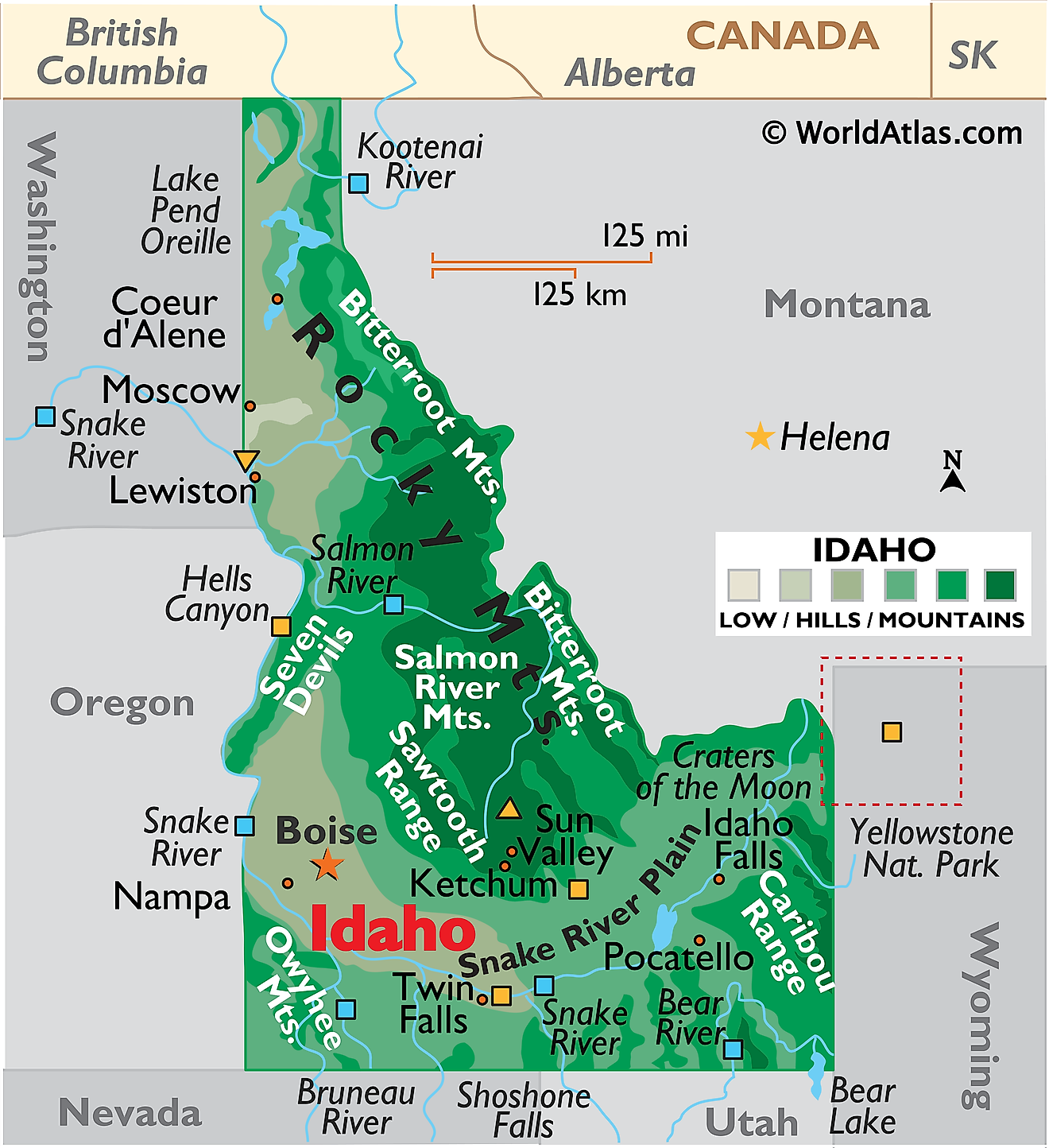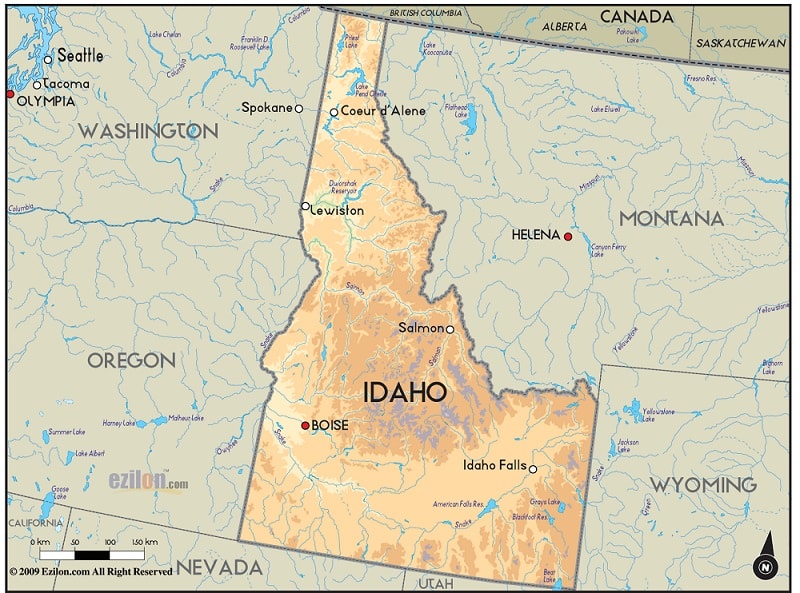
America’s Mythic Canvas: Unearthing the Enduring Legends of a Young Nation
America, a nation often described as young in the grand tapestry of global civilizations, possesses a surprisingly rich and diverse pantheon of legends. Unlike the ancient myths of Greece or the epic sagas of Europe, American legends are a vibrant mosaic, born from a melting pot of indigenous traditions, colonial struggles, frontier expansion, industrial ambition, and a persistent human yearning for wonder in a vast, untamed land. These tales, whether rooted in historical figures, a collective imagination, or the mysterious unknown, serve as a cultural bedrock, reflecting the nation’s values, anxieties, and relentless pursuit of its own identity.
From colossal lumberjacks shaping the landscape to spectral figures haunting battlefields, and elusive beasts lurking in ancient forests, American legends are more than mere campfire stories. They are parables, cautionary tales, and celebrations of human spirit, constantly evolving to fit the nation’s ever-changing narrative.
The Titans of the Frontier: Shaping a Young Land

The vastness of the American frontier, a place of immense challenge and opportunity, proved fertile ground for the birth of legendary figures who embodied the strength, ingenuity, and often exaggerated optimism required to conquer it. These were the demigods of the axe, the plow, and the railroad, whose feats mirrored the nation’s own ambitious expansion.
Perhaps the most iconic of these is Paul Bunyan, the gargantuan lumberjack whose exploits with his blue ox, Babe, are etched into the American psyche. Born from the grueling labor of logging camps in the late 19th and early 20th centuries, Bunyan’s tales served to entertain and inspire weary workers, giving mythical scale to their arduous tasks. His legendary feats, like carving the Grand Canyon with his axe or creating the Great Lakes for Babe to drink from, speak to the immense power required to tame the wilderness. Id fact: Paul Bunyan stories first appeared in print in 1910 in a promotional pamphlet for the Red River Lumber Company, solidifying his commercial and cultural presence. The legend of Bunyan is a testament to American industrial might and the pioneering spirit, where human effort could literally reshape the landscape.
In stark contrast to Bunyan’s booming presence is the gentler, more benevolent figure of Johnny Appleseed. The real John Chapman, a dedicated nurseryman from Massachusetts, spent decades traveling the Midwest in the early 19th century, planting apple seeds and establishing nurseries. He was a vegetarian, a Swedenborgian missionary, and a friend to both settlers and Native Americans. His legend, however, transformed him into a barefoot wanderer in a cooking pot hat, scattering seeds wherever he went, a symbol of westward expansion, ecological foresight, and simple generosity. Interesting fact: Chapman didn’t just scatter seeds; he established proper nurseries, fenced them, and returned periodically to tend them, selling or bartering young trees to incoming settlers. He was a shrewd businessman as well as a philanthropic pioneer. Johnny Appleseed embodies a quieter, more nurturing aspect of American expansion, a symbiotic relationship with the land rather than a forceful conquest.
Then there is John Henry, the "steel-driving man" whose legend is a powerful, yet tragic, ode to the human spirit against the relentless march of industrial progress. Henry, an African American railroad worker, famously raced against a steam-powered drilling machine, proving that a man could outperform a machine, only to die from exhaustion immediately after his victory. While the exact historical details are debated, id fact: most historians agree the legend likely originated from the construction of the Big Bend Tunnel in West Virginia in the 1870s. John Henry’s story is a profound allegory for the human cost of the Industrial Revolution, the struggle of labor against technology, and the enduring dignity of human effort. It’s a legend that resonates deeply with themes of sacrifice, resilience, and the search for meaning in an increasingly mechanized world.
Echoes of History: When Men Become Myth
Some American legends are born from genuine historical figures whose lives were so extraordinary they transcended reality, becoming larger-than-life symbols. Davy Crockett, the "King of the Wild Frontier," is a prime example. A frontiersman, soldier, and politician, Crockett’s life was already remarkable. He served in the Tennessee state legislature and the U.S. House of Representatives, famous for his wit, his folksy charm, and his coonskin cap. His dramatic death at the Alamo cemented his place in American lore. Quote: Crockett’s motto, "Be always sure you’re right – then go ahead," encapsulates the independent and determined spirit often attributed to frontier Americans. His legend, amplified by almanacs, plays, and later, Hollywood, transformed him from a complex historical figure into the quintessential American hero – brave, self-reliant, and fiercely independent.
The tales of the Wild West are replete with such figures: Jesse James, the outlaw whose legend vacillates between ruthless criminal and a sort of anti-establishment folk hero; Wyatt Earp, the lawman whose mythologized gunfights shaped perceptions of frontier justice; and Buffalo Bill Cody, whose staged "Wild West Shows" blurred the lines between his own adventurous life and theatrical spectacle, essentially creating his own legend in real-time. These figures, through their actions and subsequent embellishment, became archetypes of a rugged, lawless, and ultimately romanticized era.
Indigenous Roots: The First Narratives

Long before European settlers brought their own folklore, the diverse indigenous peoples of North America cultivated rich and intricate oral traditions. These stories, passed down through generations, explain creation, natural phenomena, moral codes, and the relationship between humanity and the spirit world. While often treated as separate cultural narratives, they are an integral part of the American mythic landscape, deeply influencing the perception of the land and its mysteries.
Tales of the Thunderbird, a giant, powerful bird spirit responsible for storms, are prevalent across many Native American cultures, particularly in the Pacific Northwest. The Wendigo, a malevolent, flesh-eating spirit from Algonquin folklore, serves as a chilling cautionary tale against greed and selfishness. Interesting fact: The Wendigo legend is often associated with cannibalism and starvation during harsh winters, embodying the ultimate taboo and the devastating consequences of unchecked desires. These stories, alongside countless others, speak to a profound connection to nature and a complex spiritual worldview that predates and continues to coexist with European-derived legends. Respectful engagement with these narratives is crucial, acknowledging them not as quaint folklore, but as living cultural traditions that offer deep insights into the continent’s original inhabitants.
The Modern Enigma: Cryptids and Urban Shadows
As the frontier closed and the world became more mapped and "known," the American appetite for mystery didn’t wane; it simply shifted. The dense forests and remote wilderness areas became the hunting grounds for new, often more ambiguous, legends: cryptids and unexplained phenomena.
Bigfoot, or Sasquatch, is arguably the most enduring modern American legend. Tales of large, hairy, ape-like creatures roaming the Pacific Northwest have existed for centuries among indigenous peoples, long before the term "Bigfoot" was coined in 1958. Id fact: The most famous piece of "evidence" for Bigfoot’s existence is the Patterson-Gimlin film of 1967, which purports to show a female Sasquatch walking through a clearing in northern California. Despite a lack of conclusive scientific proof, the legend persists, fueled by eyewitness accounts, blurry photographs, and a desire to believe that unexplored wonders still exist in our increasingly tamed world. Bigfoot embodies the lingering mystery of America’s vast wilderness, a creature from a primal past that continues to evade modern capture, challenging our assumptions about what we truly know.
Other modern legends include the Mothman of Point Pleasant, West Virginia, a winged humanoid whose appearance in 1966-67 was linked to the collapse of the Silver Bridge; and the Chupacabra, a more recent legend of a blood-sucking creature attacking livestock, particularly prevalent in the American Southwest and Latin America. These cryptids often emerge during times of social anxiety or rapid change, becoming manifestations of collective fears or a yearning for the extraordinary in everyday life.
Beyond cryptids, America is rife with ghost stories and haunted places. The spectral echoes of the Civil War linger in battlefields and plantations across the South. Ghost towns of the Gold Rush dot the Western landscape, their deserted streets whispering tales of boom and bust. Urban legends, passed through word-of-mouth and now viral online, like the Hookman or the Vanishing Hitchhiker, reflect contemporary anxieties about crime, isolation, and the unknown lurking in familiar spaces.
The Enduring Power of Myth
Why do these legends resonate so deeply in the American consciousness? They are more than just entertainment; they are cultural touchstones that offer insights into the nation’s character. They reflect an enduring optimism and resilience, a belief in the ability to overcome obstacles, whether they be a vast wilderness or a technological challenge. They celebrate individualism and ingenuity, the idea that ordinary people can achieve extraordinary things. They also tap into a primal human need for meaning, for stories that explain the inexplicable, and for a connection to something larger than oneself.
From the colossal footprints of Paul Bunyan to the elusive shadow of Bigfoot, from the tragic sacrifice of John Henry to the wise wanderings of Johnny Appleseed, American legends weave a vibrant and complex narrative. They remind us that despite its youth, this nation possesses a profound depth of storytelling, born from its unique geography, diverse peoples, and a relentless spirit of exploration and reinvention. These legends are not merely relics of the past; they are living traditions, constantly retold and reimagined, continuing to shape America’s identity and inspire new generations to seek wonder in the world around them. As long as there are stories to be told and mysteries to be pondered, America’s mythic canvas will continue to expand.


